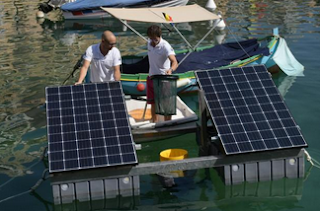Design Summary and Analysis (Draft 1)
Subject:
Design Summary (Draft 1)
In
the article “It's 2019 - Where’s My Super Suit”, Zelik (2019) writes about the
significant and unique features of the exoskeleton made by his team as well as
a brief description of the current commercial versions of exoskeletons. The
writer elaborates that the main function of an exoskeleton is to reduce the
risk of muscular injuries however, modern designs do not appeal to the public
because they are cumbersome and costly. The writer Zelik endeavors to create a
new prototype to improve upon modern designs by including a few distinct
features. One such feature includes a “clothing-like” appearance that resembles
a super-suit consisting of a vest, short, elastic bands and a switch. Another
feature allows the user to switch off the assistance, allowing the user to move
“freely and fully’. The design lacks batteries, motors, and protruding parts.
This feature is crucial as it provides a lightweight and seamless design.
Lastly, the writer Zelik (2019) claims that through laboratory tests, turning
on the suit reduces substantial loadings on the lower back.
While
pointing out the advantages of his prototype and the benefits of using
exoskeletons, the writer did not inform the readers of the many crucial
physiological repercussions when using the exoskeleton.
The
first critical repercussion that users will face will be the strains on joints.
Exoskeleton’s main role is to provide support to whichever muscle group the
user is currently engaging in. With that said, the joints will be forced to
work harder to compensate. According to de Looze et al., (2015), as cited in
McGowan (2018), studies conducted with the focus on providing aid to the lower
back shown that the exoskeleton provided support as muscle labor reduced by ten
to forty percent. However, there are unforeseen physiological consequences such
as “increased muscle activity of other joints, specifically the legs” (McGowan,
2018).
The
next big repercussion will be the discomfort and side effects that the user
will experience while using the exoskeleton. This is mainly caused by the
straps and joints of the equipment. Around seventy percent of people with
spinal cord injury (SCI) have substantial changes to their skin texture due to
injuries sustained due to pressure. This causes their skin to be vulnerable to
damage, even with a small amount of shear (Saladin et al., 2009, Groah et al.,
2015, as cited in Gorgey, 2018). Researchers developed sensors to measure the
pressure created by “physical human-machine interfaces”. Also, these sensors
provide an assessment of the level of skin or body pressure caused by the
fastening straps (Tamez-Duque et al., 2015, as cited in Gorgey 2015).
Tamez-Duque et al. (2015) greatly implied that “thigh straps” could lead to
pressure going from eighty to a hundred and twenty mmHg (millimeters of
Mercury) while operating upright movements.
The
last imperative repercussion is the effect that exoskeleton can have on your
postural muscle. Affecting users as they work harder to maintain posture
stability and increase engagement of your spine and abdominal muscles, which
are your Erector Spinae (ES) and Transverse Abdominis (TA) muscles (Theurel et
al., 2018). As reported by Sylla et al. (2014), while using a “unilateral
upper-limb exoskeleton”, many users had to adjust their “postural strategy”.
This statement was made from a study that was conducted to see if using the
exoskeleton would affect the user as they perform an overhead screwing task.
The study showed that users had to slightly shift their weight one side or bend
forward to perform the task while wearing the exoskeleton (Sylla et al., 2014,
as cited in Theurel et al., 2018).
In
conclusion, the exoskeleton may not be ready for the current market as more
tests and surveys need to be conducted to decrease physiological repercussions.
With that said, I believe that Zelik (2019) and his team is going in the right
direction in improving the modern solution.
References:
Karl
Zelik. (2019). It's 2019 - where’s my super suit. Retrieved and adapted
from https://theconversation.com/its-2019-wheres-my-supersuit-115679
McGowan, B. (2018). Industrial
Exoskeletons: What You're Not Hearing. Occupational Health & Safety,
1.
Gorgey, A. S. (2018). Robotic
exoskeletons: The current pros and cons. World journal of orthopedics, 9(9),
112.
Theurel,
J., Desbrosses, K., Roux, T., & Savescu, A. (2018). Physiological
consequences of using an upper limb exoskeleton during manual handling tasks. Applied
ergonomics, 67, 211-217.

Comments
Post a Comment